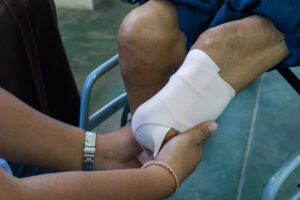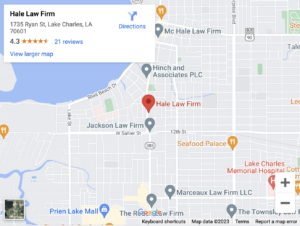
Every year, around 185,000 amputations occur in the United States. Some of these amputations are planned and are the result of a chronic illness or disease process. Others happen in traumatic accidents.
If you’ve suffered an amputation injury, you could be entitled to compensation for your suffering. Below we’ll discuss these injuries and how you can get a fair settlement in your case.
What Is Amputation?
Amputation occurs when a person loses a limb, either through a traumatic event or through surgical means. The loss of a limb, whether planned or not, is a massive transition and can come with some major complications, both physical and emotional.
In some rare cases, a person may be born with missing limbs. This is known as congenital amputation, and it can be managed in many of the same ways as other amputations.
Types of Amputation Injuries
There are two basic types of amputation injuries: traumatic and surgical.
Traumatic amputations occur when one or more limbs are cut off during an accident. For instance, if someone works around power saws and one of them accidentally severs their leg, that is a traumatic amputation. These injuries most commonly occur around farming equipment, power tools, or motor vehicle accidents.
Surgical amputations are performed intentionally and take place in an operating room. As we’ll discuss more in a moment, some surgical amputations are still the result of a traumatic injury. Often, these procedures are quite literally a case of “life or limb.”
Reasons for Surgical Amputations
As we mentioned, some surgical amputations are the result of traumatic injuries. If a leg is crushed beyond repair in a car accident, it may still need to be amputated by surgeons. Burns can also cause such extensive damage that it’s safer to remove the limb than to risk a serious infection that could threaten the patient’s life.
Other surgical amputations are the result of a chronic illness, such as diabetes or peripheral artery disease. These conditions can cause damage to your blood vessels which leave your limbs unable to get the blood flow they need, resulting in tissue death.
What Happens During an Amputation Operation?
During an amputation operation, a surgeon will begin by removing the damaged or diseased portion of the limb. They will leave as much healthy tissue in place as possible. They may cut the bone a little shorter to prevent pain once the wound has healed. From there, they will stitch the muscle around the end of the bone to strengthen the remaining limb and form a sturdy stump. The surgeon will close the skin around the remaining stump and create a clean suture that can heal.
Complications After Amputation Injuries
Any surgery can come with complications after the fact, but amputations have some additional risks. Of course, infections are a risk after any surgery. Taking care of the amputation site is critical to avoid developing a life-threatening infection.
Even after the wound has healed, as many as 80 percent of amputation patients suffer phantom limb pain. This is when a patient seems to feel pain or itching in the limb that has been removed.
This happens because your brain has not yet adjusted to the fact that that limb is no longer there. It tries to send signals to control the limb and gets nothing back. It then continues sending signals that get interpreted as pain or cramping.
Many amputation patients also suffer mental health effects as a result of the loss of their limb. Adjusting to life without one of your limbs is challenging, and many people may suffer anxiety or depression. This can be made worse by the fact that patients may not be able to do the things they once loved, such as playing a sport, cooking, or playing with their children, in the aftermath of their operation.
Recovering from an Amputation
Although an amputation will certainly change what your day-to-day life looks like, it is more than possible to go on to live a rich, fulfilling life. Physical and occupational therapy can help you learn to function independently without your lost limb. And prosthetics can help you return to many of the activities you loved before your injury, including exercising, creating artwork, and more.
In the recovery period after your amputation, it’s best to be open and honest with your loved ones about what you need. It’s normal to feel anger, sadness, or even a sense of being lost; don’t be ashamed if you have these feelings, and discuss them with someone you trust. Therapy can also help you adjust to life without your limb in a healthy, constructive way.
How Can You Get Compensation for Amputation Injuries?
If you’ve suffered an amputation injury as the result of an accident, you may be able to get compensation for your injuries. There are two basic types of compensation personal injury victims can get: economic and non-economic.
Economic compensation helps to cover the material losses you experienced as a result of your amputation. On average, an amputation operation costs between $20,000 and $60,000; a fair settlement can help you pay those medical bills. Economic compensation can also cover any wages you lost during your healing period, as well as wages lost because you can no longer perform your job in the way you once could.
Non-economic damages address the impacts of your operation that don’t have a specific dollar value. This can include your pain and suffering, any mental health challenges you’ve suffered after your amputation, and your loss of enjoyment of life as a result of losing your limb.
Contact Our Amputation Injury Lawyers
Amputations are life-altering injuries and generally are only performed when doctors must make the choice between saving the patient’s limb and saving their life. If you’ve suffered an amputation injury as the result of an accident, you might be entitled to compensation. A good personal injury lawyer can help you fight for the money you deserve.
Schedule a free consultation with Hale Injury Lawyers, LLC or call (337) 426-1071 today to discuss the details of your case.

